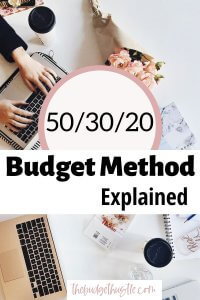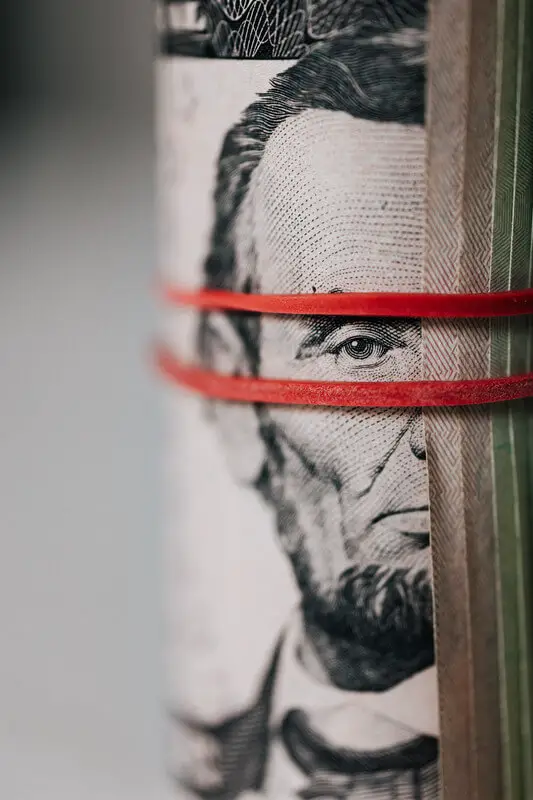This site contains affiliate links to products. We may receive a commission for purchases made through these links.
What is it? How can I use it effectively? These are legit questions. I asked the same thing when I first saw the 50/30/20 Budget.
I know you hate to budget, I do too.
(Don’t we all)
Its something I hate to think about but it is so necessary. So why not make it simple with this strategy.
The Facts about Budgets
Detailed budgets are not for everyone and that’s ok. I found this good “meet in the middle” budget strategy for the people who don’t want to be overwhelmed with too many categories and sections.
Senator Elizabeth Warren is a bankruptcy expert, and her daughter, business executive Amelia Warren Tyagi, co-authored a book called, “All Your Worth: The Ultimate Lifetime Money Plan.” Click here to see the site
In this book, they go over the 50-30-20 rule and I think it’s a great way to easily get your money in order.
This rule says that you should use the money you have after taxes are taken from your paycheck and use 50% for needs, 30% for wants, and 20% for savings.

Break it Down
So let’s break this down into some numbers to make it easier to understand.
For example, if I bring home $4500 after tax then this means that I can use $2250 for needs, $1350 for wants, and $900 for savings.
To calculate this you would take $4500 x 0.5 (50%) or 0.3 (30%) or 0.2 (20%) depending on which category you are trying to calculate.
This method is meant to be simple so let’s not overcomplicate it.
It’s designed to protect yourself from overspending by breaking it down into an easy to manage form.
So what is in each category? It depends on what you consider a want or a need. Some people NEED coffee…lol.
Wants and Needs
Needs are things that you must pay in order to live, wants are things that you could live without (and I am talking life or death live without…so coffee as we said earlier is a want).
I know some of you say you couldn’t live without Netflix but trust me, if funds are low I would hope you would pay the light bill and cut the Netflix or cable off.
We turned off our satellite over 3 years ago to save the $80 per month that we were spending and I haven’t missed it at all. I have noticed that now I may not even turn the television on until after 9:00 at night (that’s when the kids go to bed).
We use Hulu now to watch tv shows, almost everything we want to see is on there and if something airs on Mondays we just have to wait until Tuesday to see it. It’s really worth the $68 in savings.

Some examples of wants/needs/savings would be:
Needs:
Housing or Rent (includes property taxes etc.)
Car (if you need one to get to work, ect.)
Groceries (what you need, not Cheez-its and Oreo cookies)
Healthcare (if this comes out before tax, add it back in to get an accurate budget)
Insurance (life, auto)
Utilities
Loan Payments
Childcare
Wants:
Clothes
TV/Netflix
Vacations
Eating Out
Entertainment
New Handbag
Savings:
Retirement
Investments
General Savings Account
Extra debt payments
Here are some things to help you be successful:
If your monthly bills that are necessary are higher than the allowed 50% then by all means, make some adjustments.
The 50/30/20 budget method is just a suggested amount.
You can make any adjustments to fit your money needs.
You need to take a serious look at your overall spending if you want to be successful with any budget.
Let’s Get Real and Get it Under Control
Getting real with yourself is so necessary to get your money under control.
Eating Out
How often do you eat out?
Could you pack your lunch instead?
I try to do this every day for lunch because I could end up spending an extra $50 a week on just eating lunch out and let’s face it… it’s not really worth it.
(update- we have gone vegetarian for a diet so I have to meal plan and take my lunch)
I think of food as being disposable, while it may taste good when you are eating it, it’s going to be gone just as fast as you spent it.
This is something I struggle with so much. An example is getting a drink at a restaurant. Think of taking 5 people out to eat and everybody getting a $2 drink…that’s $10 off the meal right there when water is free.
Shopping
If you love to shop, try the app called Poshmark. (use code SSEAWR5923 to save $10) You can sell your stuff and use the money you make to buy other people’s gently used stuff or you can have the money sent to your bank account.
I have saved a ton with this app because the jeans I love are $100/pair and when I find them on Poshmark, I spend on average $20 to $30 a pair. I have sold everything from shirts to jeans, to shoes and even bags.
Any extra money for things you don’t want or need anymore is a good thing.
Cut the Grocery Bill
Try cutting your grocery bill.
The Grocery Budget Makeover is a great resource to help you do this. I used Erin’s strategies to help me save lots on my groceries!
Click here for the Full Course
Savings
When you address the savings part, whatever percentage is comfortable for you, set an amount and stick to it.
Think of it as preparing for the future or an emergency.
If you can, go ahead and take the savings part out when you get paid to make sure you don’t spend it on anything else. It’s always there if you need it but this way you can try a little harder to save.
When you are making loan payments, try to pay extra towards the principal. I was able to pay my husband’s 5-year truck note off in 3 years by adding extra to the principal each month.
I also paid bi-weekly, this applied the money to the principal earlier so it reduced it even quicker.
There is nothing quite like paying something off early. It’s invigorating!
Final Facts
The 50/30/20 budget method works well if you get put off by complicated budgets.
It makes you see what is essential and what is not. Looking at things this way can make you realize the things that you don’t need.
It’s ok if this method doesn’t work for you. You can try the detailed budgeting method here.
It’s all about how you prioritize your money and when you can make your money work for you, it’s a double win!
There is no wrong way to budget unless you aren’t budgeting at all!
Go follow me on Pinterest!! And check out some other posts:
Brilliant Money Saving Hacks for Any Budget
12 Ingenious Work from Home Opportunities
Easy Eco-Friendly Home Product Swap Ideas





